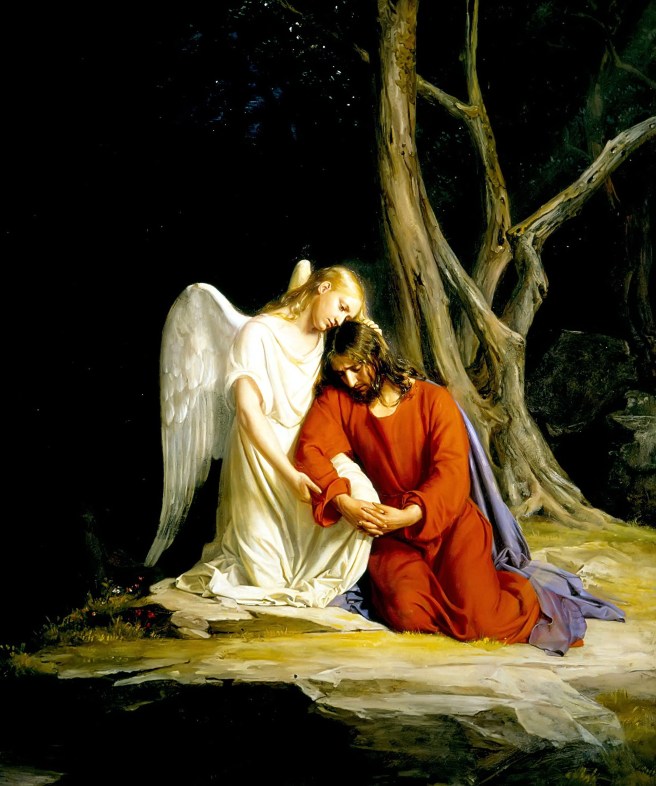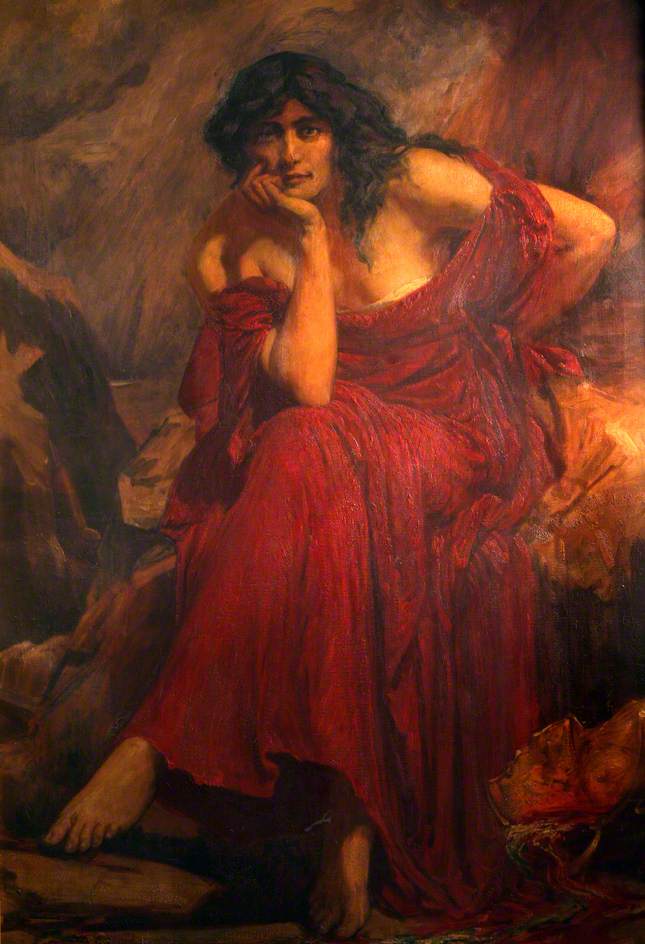Look at that, day one and I’m still on track ;D. Well done me!
For my first session digging into archetypes, I’m working on untangling all my different ideas about what they are, how they are formed, how they affect us, and how we can work with them more consciously. I’m not able to get out to the library now, though I do want to learn more about what Jung and other psychoanalysts have to say on the subject. However, videos are so much more digestible than full books, and they certainly do get my brain rolling. So I’ve been listening to the first ten minutes of Joey Morris’s discussion of the subject. This post is a bit rough, a bit of a hodge podge of my ideas, reflections on Joey’s thoughts, and my own experiments; just so that you’re warned!
She gives a good definition from Jungian psychology: “An inherited unconscious idea, pattern of thought, image, etc, universally present in individual psyches.”
Archetypes are universal figures that embody a particular quality, attribute, or emotion. While there are many that are universal across the human experience, they are interpreted differently by individuals, based on our experiences, what we’ve learned, what we’ve read, etc. I think that you can argue that there are some that are less universal and more culturally specific as well.
In my understanding, we typically construct archetypal images for ourselves without too much conscious thought, probably mainly when we’re young and our brains and ideas are more flexible. (I know that Jung has ideas about the collective unconscious, but I’ll have to dive into that another day.) I think it would certainly be possible, and maybe more beneficial, to work on constructing them more consciously, considering the forces, energies and figures that we need in our lives at this moment. For instance, if you need support, you could visualize and work with a supportive archetype. I think that there are many different ways to work with archetypes, which I’m looking forward to exploring as well!
Gods and goddesses, heroes from mythology, figures from popular culture, and people currently living can all represent archetypes. (Even places too, as she mentions later on in the video!) Joey goes into an interesting example of a person currently living as a modern interpretation of an archetypal energy. I’m not sure I feel comfortable visualizing a living person as an archetype, using them (or my idea of them) as a tool in my spiritual practice; I feel that to a certain extent, this reduces the complexity of a person, seeing them only in a specific role. I think you’re in danger of making them into a sort of stereotype, where you’re only seeing the aspects of them that fit with that archetypal definition. However, you can keep in mind that they don’t always embody that archetype (we have the capacity to embody just about everything and anything); but if their role in a particular context is a powerful image or representation of that archetype, that can be an inspiration for us, a source of support.
She notes that archetypes are important for the tarot as well, of course – that’ll be interesting to get into.
I think those thoughts are slightly less tangly now. The more I learn, the more ideas I get and avenues I realize are available for exploring too 😀 which is good, if a bit overwhelming sometimes. For my meditation, I’m going to focus on an angel as an archetypal figure of love. I haven’t had a strong relationship with the concept of angels throughout my life, apart from some mild exposure to Christian doctrine and fairly clichéd examples from popular culture; but when I thought of a personification of the power of love, images of an angel full of gentleness and kindness come to mind. I can work with that :).

Continuing this on day two, with post-meditation notes…
Now, this is the idea of the personification of an abstract concept. I realize that I have a source of love within myself, that I can tap into, even in difficult times. Visualizing the figure of an angel, the personification of love, helps me to make that connection.
Taking it a step further, and getting a bit more playful, I give my archetypal figures a bit of a personality, too. I don’t just want to talk to bland angels who are singing all the time, that would get dull fairly quickly. I let myself be open to whatever conversations pop up with this figure, who understands completely where I’m coming from and why I’m suffering at the moment, whether it’s something genuinely terrible or a mild annoyance. I know that they are created using my imagination; but I also know that love exists, in some way, if not in a physical way. It exists in our experience of it, I suppose. And talking with a personification of love is a way to tap into that source of love within myself. (A bit like asking yourself WWJD, only maybe more like “What would Jesus say to that”.) And if I need to trade jokes with the angel to keep myself entertained, well, I never promised I would be a serious stoic all the time.
This may sound a bit like creating your own imaginary friend. As long as you’re aware of the difference between physical reality and the imagination, I don’t think there’s much harm in that – it keeps my inner child entertained ;).
On a related note, while I’m comfortable crafting the image of an angel into an archetype that meets that need, I’m less comfortable using the archetype of Jesus for that end. (I think it’s fair to say he’s an archetype of love, and that different people will envision him differently depending on their life experiences.) This is partly because I’ve met people who have such a personal, emotional connection to this figure, and I feel a bit disrespectful to adopt their figure for my own work (not that I’d tell them, but still); but also because of all the religious and cultural baggage around that name. When I think of that name, I already have a lot of different images and personalities that come up, and they’re not necessarily what I want to picture when I’m focusing on pure love.
I like the idea of archetypes as role models as well. Joey shares a quote on the Morrigan as an archetype: “In the Morrigan, we can see their love of warfare, their pride in protecting their land and loved ones, their positive attitude towards women in general. She reflects the Celtic ideal of a woman in power: she is both fierce and beautiful, as likely to share a man’s bed as she is to fight beside him on the battlefield.” It’s good for women to be aware of figures like these. I had some strong female role models growing up, but I think I heard a lot more about how women should look, how worried they should be about staying thin and young and beautiful. I never doubted that I could do anything I wanted to do, but I can’t think of any role models like the Morrigan who were in my awareness growing up.
We can’t control the figures we’re presented with as children, but we can certainly seek out figures that empower us to live in our full power as adults.

Meditation #2: Focused on the source of love in the core of my chest; worked on directing that love towards a part of my body that bothered me; and then towards a family member who bothered me. With the help and encouragement of Love, the archetypal angel. Yeah, I think his name is just “Love” too. It suits him :).
The construction of these figures is a bit of a collaboration between my initial ideas and improvisations from my imagination, from my non-cognitive, more intuitive side.
Finishing up that video on day three…
So, Joey ties this in to using myths to build a relationship with a deity. I don’t feel particularly called to do this right now. I’m happy to allow that gods and other spiritual beings could exist, but I have the sense that these pantheons that various cultures have created are more their way of dealing with the unknowable than literal and accurate depictions of celestial beings. If gods do exist, I think they’re probably not within our realm of understanding; and while I want to open myself to different ways of experiencing the universe (and stimuli from non-physical senses is a part of that – oh my, getting serious, using words like stimuli now 😁), reaching out to specific deities created by older civilizations just isn’t my cup of tea. Or if I was to do so, it would be with the awareness that I’m dealing with my perception of that archetype, rather than some pre-existing figure. I think that archetypes that I’ve defined myself are more easily grasped than unknowable deities, and can be more useful tools to work with, at least for me.
The last thing that Joey mentions is the idea of using archetypes as a way of gaining a deeper understanding of yourself – and as a tool to tap into all the different aspects of yourself, I’d add. We can get too hung up on our definitions of ourselves, and make claims about our abilities based on that. Archetypal figures can help us to connect with the neglected parts of ourselves, and really live in our power.
I started with a meditation today; I had an idea of a different character. The wise woman, the wild woman, the witch, the priestess. I think I would address her with all four titles, they’re each too narrow on their own. This is again tapping into the archetype of the witch that I dug into in this post. She was very helpful as a guide; may dig more deeply into that next.
Wow, that’s finally the end of this post, three days in the making. Hammering out your ideas isn’t easy work 😅… and I may need to have more of a balance of practical, intuitive work vs logical study. I’m interested in the logical study, but it’s the attempts to touch and work with the non-physical that will really keep me coming back to this, I think. I know this approach isn’t the only way that people work with archetypes, but I hope my notes are also helpful to someone out there. 🙂

